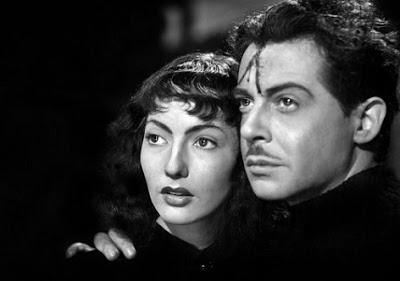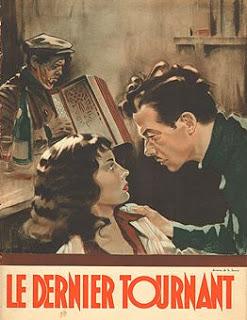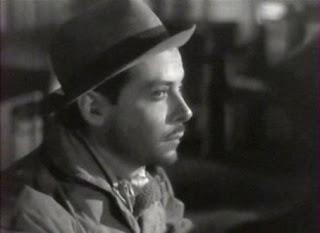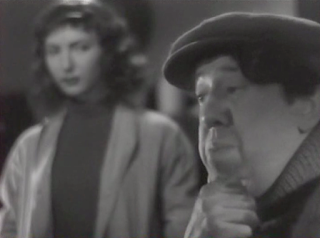 SAN FRANCISCO'S 3RD FRENCH FILM NOIR FESTIVAL COMES TO THE ROXIE THEATER
SAN FRANCISCO'S 3RD FRENCH FILM NOIR FESTIVAL COMES TO THE ROXIE THEATERFrom Thursday, November 3, through Monday, November 7, San Francisco's Roxie Theater will host the city's third annual French film noir festival, The French Had a Name For It 3. Fifteen films are set to screen, and opening night will showcase two from 1939, Marcel Carné's celebrated Le jour se lève (Daybreak), cited by many as the bridge film between poetic realism and noir, and Pierre Chenal's Le dernier tournant (The Last Turn), the much-anticipated, rarely seen first film adaptation of James M. Cain's searing crime novel, The Postman Always Rings Twice.
Cain (Mildred Pierce, Double Indemnity), a pioneer in that genre of spare, hardboiled fiction also known as roman noir, saw Postman, his first novel, published in 1934 to much notoriety. Bleak and tawdry, his steamy tale of a drifter and a young, dissatisfied wife who first cuckold and then murder her much older husband, created a scandal and sensation on publication. The book might've been adapted by Hollywood as soon as it arrived in bookstores had it been written only a year or two earlier. But the Hays Code, a strict set of rules governing Hollywood film production, was adopted in 1930 but ignored until 1934 when it began to be rigorously enforced. It wouldn't be until 1946 that Hollywood would finally bring Cain's story to the screen.
 In the years just before World War II, French cinema entered what is now known as its classic era and directors like Marcel Carné, Jean Renoir, Julien Devivier, Jean Vigo, Pierre Chenal and Jacques Feyder were making films of an emerging cinematic style known as poetic realism. These films were marked by working class settings, moody themes, storylines often focused on doomed love and featured stylized - some would say proto-noir - cinematography, optical effects and editing. While James M. Cain's raw prose was anything but lyrical, Postman's desolate tale of illicit love at a tumbledown, seaside roadhouse lent itself to interpretation by a director out of the poetic realism movement.
In the years just before World War II, French cinema entered what is now known as its classic era and directors like Marcel Carné, Jean Renoir, Julien Devivier, Jean Vigo, Pierre Chenal and Jacques Feyder were making films of an emerging cinematic style known as poetic realism. These films were marked by working class settings, moody themes, storylines often focused on doomed love and featured stylized - some would say proto-noir - cinematography, optical effects and editing. While James M. Cain's raw prose was anything but lyrical, Postman's desolate tale of illicit love at a tumbledown, seaside roadhouse lent itself to interpretation by a director out of the poetic realism movement.Pierre Chernal's Le dernier tournant may lack the kind of Hollywood star power (sultry Lana Turner, resplendent in brilliant white, and smoldering John Garfield) and scrupulous construction that drives MGM's Tay Garnett-directed version of The Postman Always Rings Twice (1946), but his film has style and polish, with a script strikingly faithful to the book and the strong support of a trio of fine actors in the three central roles.

Fernand Gravey as Frank
Fernand Gravey (La ronde, The Great Waltz) was cast against type as Frank, the aimless drifter who resorts to murder for the sake of love and lust. Disheveled and unshaven, Gravey reveals not a trace of the suave sophistication he was known for in most of his lead roles and is surprisingly credible and affecting in a downbeat part.Corinne Luchaire (Prison Without Bars) was only eighteen when cast as (equally young) Cora, who married much older Nick strictly for security. Luchaire has none of Lana Turner's glamor, but her youth and fierce energy give her a realism as Cain's "hell cat" that Turner could never hope to

Corinne Luchaire (Cora) and Michel Simon (Nick)
achieve. Of course, it's doubtful that Lana Turner, first and foremost a celluloid goddess, was ever actually meant to seem real.And there is Michel Simon (L'Atalante, Le quai des brumes)as Nick, the inconvenient husband. Blessed or cursed with a Sharpei-like face that sometimes brings Charles Laughton as Quasimodo to mind, Simon plays Nick to the oblivious, ludicrous hilt, leaving little question why this butt of cuckoldry is ripe for killing.
One of Le dernier tournant's central assets is the cinematography of Christian Matras, best known for his work on Max Ophuls' final four masterworks, La ronde (1950), Le plaisir (1952),The Earrings of Madame de...(1953) and Lola Montes (1955). Matras had photographed La Grande Illusion for Jean Renoir in 1937, and his work of that period is noted for its documentary-like look and feel. On Le dernier tournant, Matras used a more stylized, fluid approach and he would later, with Ophuls, develop such skill with camera movement that it would be called "camera choreography." His use of chiaroscuro lighting along with some expressionistic and at times falshy camera work on Le dernier tournant add darkness and depth to Chenal's rendering.
~
For program and ticket information for The French Had a Name For It 3, click here.


